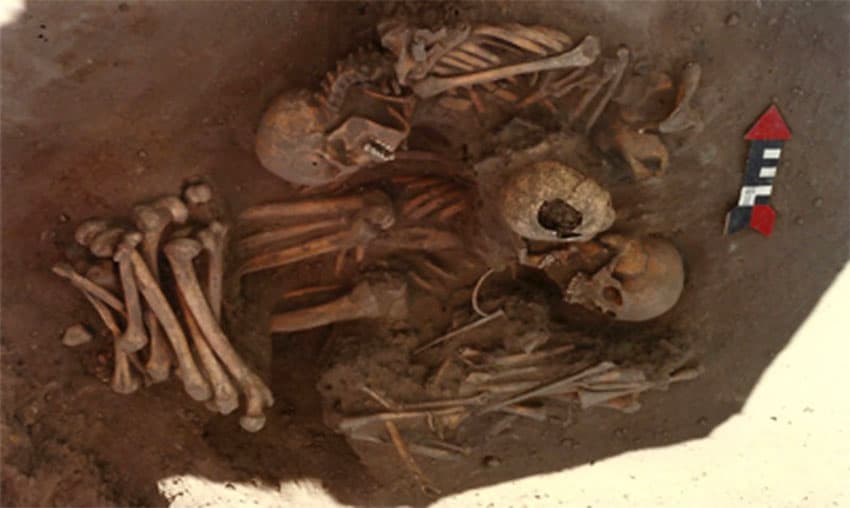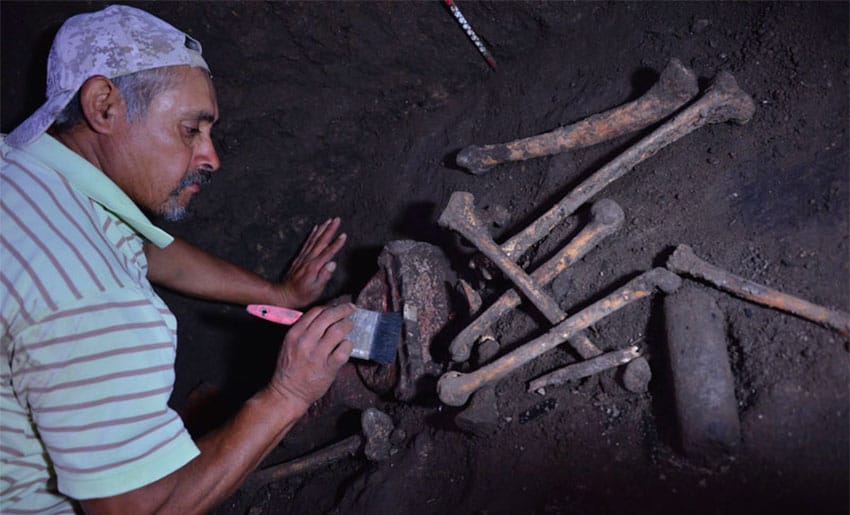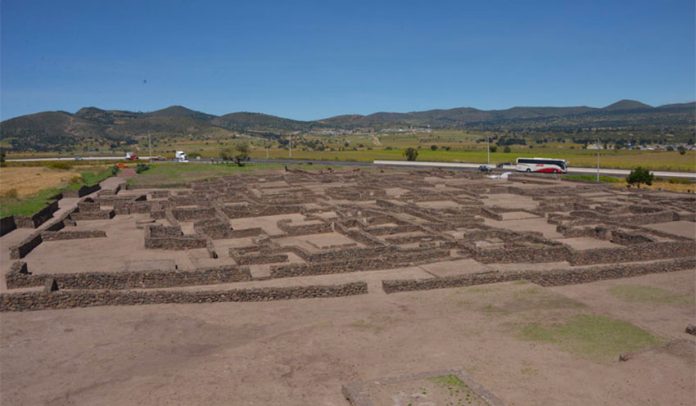Spanish conquistadores massacred women and children in an Aztec-allied town 500 years ago after the indigenous residents sacrificed and apparently ate a group of Spaniards they captured, according to new research.
The National Institute of Anthropology and History (INAH) has published findings from decades-long excavation work at the Tecoaque, or Zultépec, archaeological site in Tlaxcala.
INAH said in a statement that indigenous Acolhua residents of the town of Zultépec captured members of a Spanish caravan that was part of an expedition led by conquistador Pánfilo de Narváez. The governor of Cuba, Diego Velázquez de Cuéllar, sent Nárvaez to Mexico in 1520 to stop the invasion of Hernán Cortés because he hadn’t authorized it.
After capturing members of the Spanish caravan, including women and children, the residents of Zúltepec sacrificed them over a period of “eight agonizing months” as an offering to the gods, INAH said.
In around January or February of 1521 it’s probable that the Acolhuas sacrificed the last of 450 people they had captured, among whom were also Cubans of indigenous and African descent who arrived with the Spaniards, and Tlaxcaltec, Totonac and Mayan people who allied themselves with the Spanish.

At about the same time a hill in Zultépec where the people were sacrificed came to be known as Tecoaque, which in the Náhuatl language means “the place where they were eaten.”
That suggests that the Acolhua people ate the victims of their ritual sacrifices. It is also believed that they killed and ate horses upon which the Spanish arrived.
When they were killing the last of their captives in early 1521, the residents of Zultépec knew that there would soon be revenge for their actions, INAH said.
Indeed, Cortés – who led the expedition that conquered the Aztec capital of Tenochtitlán in August 1521 – ordered Gonzalo de Sandoval to carry out a revenge attack on the town after he found out what had happened to the members of the Spanish caravan.
Enrique Martínez Vargas, an archaeologist and director of the Tecoaque-Zúltepec site, said the attack likely occurred at the start of March 1521. He said that there are references to the attack in The True History of the Conquest of New Spain by Bernal Díaz del Castillo, a conquistador, and Cortés’ Third Letter of Relation to the Emperor Carlos V.
Fearing revenge, the Acolhua people of Zultépec tried to fortify the town by building walls and other defensive constructions but they were ultimately unable to stop the invasion on horseback led by Gonzalo de Sandoval.

“Some of the warriors who had stayed in the town managed to flee, but women and children remained, and they were the main victims,” Martínez said. “This we have been able to demonstrate over a 120-meter stretch of the main thoroughfare, where the skeletons of a dozen women were found who appeared to be ‘protecting’ the bones of 10 children between the ages of 5 and 6 whose sex has not been determined.”
Martínez said that “women and children who were sheltering inside rooms were mutilated, as evidenced by the discovery of hacked bones on the floors.”
“The temples were burned and the statues of gods were decapitated. This is the way that this place, which represented a resistance for Cortés, was destroyed,” he said.
INAH said that the residents of Zultépec also hid evidence of their sacrifices in shallow wells when they became aware that a revenge attack would occur. Archaeologists have found human bones that were carved into trophies, the remains of animals brought by the Spaniards (cows, goats and pigs) and a wide range of personal objects that belonged to those captured, among other relics.
Mexico News Daily
